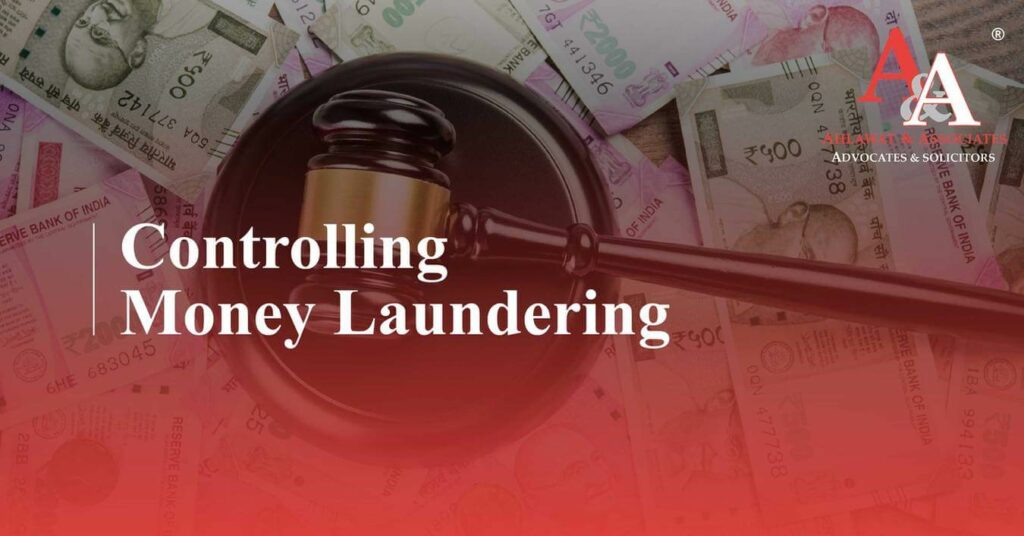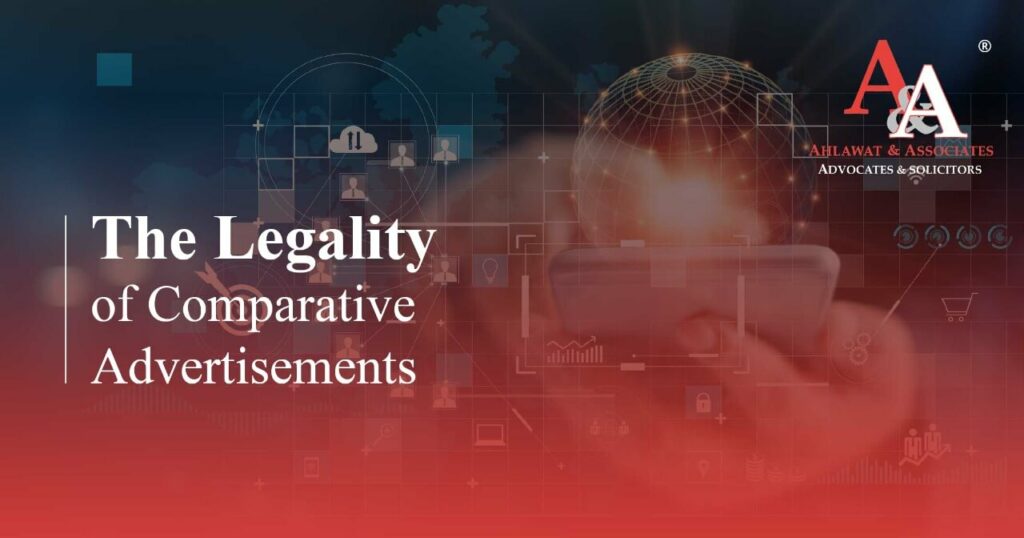
 Disha Toshniwal
Disha Toshniwal
 November 21, 2022
November 21, 2022
“Capital as such is not evil; it is its wrong use that is evil. Capital in some form or other will always be needed.”
-M.K. Gandhi
White collar crimes in India have recently grabbed the limelight through the fiasco involving fugitive businessmen wherein such businessmen siphoned off wealth from the country worth thousands of crores.
Money laundering is a deep-rooted problem with far reaching consequences maiming the economic and political structure of a country. If not appropriately curtailed it has the potential to foster widespread antisocial activities. With the advent of digitalisation there is an increasing integration of global economies and thereby providing an international perspective to the menace of money laundering.
Money laundering is an umbrella term which can be defined as veiling of illegally obtained money as money derived from a legitimate source. It is to be noted here that it is impossible to exhaustively define the term money laundering as the definition of money laundering is wide and open ended. However, in the Indian scenario money laundering is a predicate offence as held by the Supreme Court in the case of Vijay Madanlal Choudhary and Ors. v. Union of India and Ors., wherein the Supreme Court stated that “money-laundering is a very technically-defined offence. It is not the way we understand ‘money-laundering’ in a colloquial sense. It postulates that there must be a predicate offence and it is dealing with the proceeds of a crime.”
Section 3 of Prevention of Money Laundering Act, 2002 (“PMLA”) states “whosoever directly or indirectly attempts to indulge or knowingly assists or knowingly is a party or is actually involved in any process or activity connected with the proceeds of crime and projecting it as untainted property shall be guilty of offence of money laundering.” To further clarify the definition, the Apex Court in P. Chidambaram v. Directorate of Enforcement held that an offence as prescribed in the schedule of PMLA is a sine qua non for the offence of money laundering which would generate the money that is being laundered.
Article 1 of the EC Directive on Prevention of the use of the Financial System for the Purpose of Money Laundering, 1991 defines the term money laundering as “the conversion of property, knowing that such property is derived from serious crime, for the purpose of concealing or disguising the illicit origin of the property or of assisting any person who is involved in the committing of such an offence or offences to evade the legal consequences of his action, and the concealment or disguise of the true nature, source, location, disposition, movement, rights with respect to, or ownership of property, knowing that such property is derived from serious crime.”
It is impractical to classify procedures of money laundering exhaustively as it is an ever-evolving process. Nonetheless, a transaction involving money laundering may include a combination of the procedures stated below:
The term ‘Hawala’ originates from the Arabic term ‘Hewala’ translating to transfer or trust. Hawala can be considered to be a remittance system which is parallel to the conventional remittance system. It functions outside the purview of the traditional banking and financial channels. There is no physical movement of money in a typical hawala transaction, it rather uses an international network of dealers referred to as ‘hawaladars’. For example, ‘A’ is a resident of United States who wishes to remit money to his relative ‘B’ in India. ‘A’ would approach a hawaladar in the United States and would provide him with the details of the transaction and the money to be remitted and would receive a password in return. ‘A’ would communicate the password to ‘B’ in India. Upon receipt of the correct password a hawaladar in India from that network would transfer the remitted amount to ‘B’ in India.
Hawala transactions are particularly common in respect of emigrant workers. It offers the advantage of expediency, evades taxation, and involves lesser charges over the formal banking system. Further it eliminates the requirement to possess a bank account or even visit a bank branch for the remittance of the amount.
The process of smurfing involves structuring of deposits in such manner wherein a large sum of money is split up into smaller amounts so as to avoid any reporting threshold and government scrutiny. The amount may then be deposited into one or more bank accounts by an individual or multiple people over an extended period of time.
Round tripping is a practice wherein there is a transfer of funds from one country to another and the same fund is transferred back to the country of origin. The ulterior objective herein would be tax evasion or integration of illegal money into the economy. The Reserve Bank of India through it’s ‘FAQs’ issued in 2019 has clarified that investments involving round tripping is strictly prohibited under the automatic route.
Money laundering is a complex and evolving process thereby rendering identification of the process complicated. The basic steps involved in money laundering can be broadly classified into the following:
The process of placement involves the physical disposal of cash that has been derived from illegal sources. This is the first step of the process of money laundering with the ulterior objective of removal of the money from the location where it was acquired and is done to avoid scrutiny and detection. The objective is achieved through opening bank accounts in the name of unknown individuals or organisations and the illegally obtained money is deposited in such account.
Layering involves the attempt to conceal the source of income of illegal money by way of creation of complex and fictitious layers of complex transactions. This obscures the auditing trail and provides anonymity to the parties involved in such transactions. Some methods of layering include investments through shell companies, purchasing valued commodities like gold and diamond and distributing them over jurisdictions. Further techniques of corresponding banking, interest free loan and fictitious sales and purchase are also resorted to.
The process of ‘integration’ involves re-incorporation of laundered money into the regular economic channels. This is achieved by setting up of shell companies in countries where anonymity is guaranteed. Further illegal money is often represented as proceeds of a business activity thereby regularising the illegal money.
A popular Chinese proverb goes as following “A fish sees the bait, not the hook; A person sees the gain, not the danger.”. A developing economy like India provides the perfect breeding ground for white collar crimes. In India PMLA, Foreign Exchange Management Act, 1999 coupled with relevant rules and regulations formed by regulators such as the Reserve Bank of India (RBI) and the Securities and Exchange Board of India (SEBI) form the basic legal framework. The significance of a strict legal framework to govern and regulate money laundering cases cannot be emphasised enough. Following are the primary concerns that may be addressed by an adequate legal framework:
Unaccounted money may be channelised into anti-social activities including terrorism. Such money may be utilised for illegal import of arms and ammunition or for promoting other illegal activities.
Banks are the pillars of economic prosperity. The effect of money laundering may erode the effectiveness of the financial sector and curb it’s role in the economic development of the country. Banks are the primary line of defence in the war against money laundering.
The infiltration of illegitimate money into the economy can wreak havoc in the economy causing distress including uncontrolled inflation. Drainage of public money and evasion of taxation becomes the ultimate burden of the exchequer. Further money laundering may lead to errors in national statistics and fallacies in macro-economic policies thus resulting in political instability. Money laundering needs to be handled with iron hands as the threat to national stability in general is pertinent.
As aptly stated by Lewis H. Lapham “Money is like fire, an element as little troubled by moralizing as earth, air and water. Men can employ it as a tool or they can dance around it as if it were the incarnation of a god. It acquires its meaning from the uses to which it is put.”, money is a necessary evil. Cases of money laundering cannot be contained to political boundaries. The alarming fact is that white collar crimes share a close nexus with other organised crimes, and it is a war waged against the global community.
The other facet of money laundering is it’s continual evolution. It is imperative that the law governing money laundering evolves at the same rate to maintain it’s effectiveness at curtailing and proscribing the global issue.
Money laundering is a global phenomenon required to be tackled at the international level. Several international organisations have been established to tackle the menace, some of which are as follows:
The FIU-IND is the central national agency of India responsible for receiving, processing, analysing and disseminating information relating to suspect financial transactions. FIU-IND is also responsible for coordinating and strengthening efforts of national and international intelligence, investigation and enforcement agencies in pursuing the global efforts against money laundering and related crimes.
The PMLA regulates any property that has been derived or obtained by any person directly or indirectly as a result of any criminal activity. Further as per section 2 (1) (v) of the PMLA, property would include “property of every description including corporeal or incorporeal, movable or immovable, tangible or intangible and includes deeds and instruments evidencing title to or interest in, such property or assets, wherever located;”
An effective anti-money laundering structure should effectively promote a sound financial structure. Prevalent incidents of money laundering would deter foreign investors from investing in a country due to the uncertainty over the returns from such investment. The significance of foreign direct investment cannot be undermined for a developing country like India. Further money laundering can erode the financial assets thereby hampering economic growth and development.
The objective of KYC Norms is to prevent banks from being used, intentionally or unintentionally, by criminal elements for money laundering or terrorist financing activities. The Know Your Customer Direction, 2016 issued by the Reserve Bank of India governs financial institutions in establishing the identity of their client by using reliable, independent source documents, data or information.

As quoted by Gianni Versace, “It is nice to have valid competition; it pushes you to do better.” Every industry
View More















 Cookies Consent
Cookies ConsentWe use cookies to help you navigate efficiently and perform certain functions. You will find detailed information about all cookies under each consent category below. Read more...
 Cookies Consent
Cookies ConsentWe use cookies to help you navigate efficiently and perform certain functions. You will find detailed information about all cookies under each consent category below. Read more...


Comments
Post A Comment
Your email address will not be published *